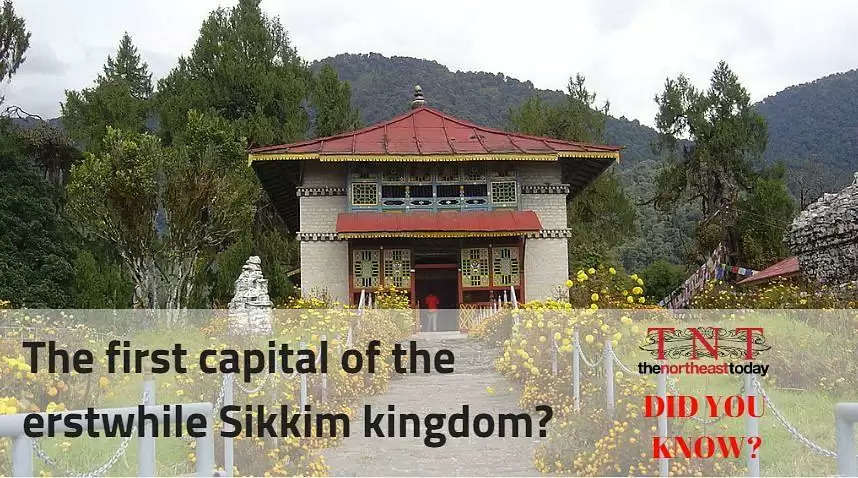DID YOU KNOW about the first capital of the erstwhile Sikkim kingdom?

TNT Desk | May 21, 2018
Yuksom is a historical town in Geyzing subdivision of West Sikkim district in the Northeast Indian state of Sikkim. It was the first capital of Sikkim established in 1642 AD by Phuntsog Namgyal who was the first Chogyal (temporal and religious king) of Sikkim. The coronation site of the first monarch of Sikkim is known as the "Throne of Norbugang".
Yuksom is where there is the Norbugang Chorten near the Norbugang throne, the place Namgyal was crowned and several monasteries and a lake. The dynastic rule of the Chogyals lasted for 333 years.
The Chogyal established the first monastery at Yuksom in Sikkim known as the Dubdi Monastery in 1701, which is part of Buddhist religious pilgrimage circuit involving the Norbugang Chorten, Pemayangtse Monastery, the Rabdentse ruins, the Sanga Choeling Monastery, the Khecheopalri Lake, and the Tashiding Monastery.
For the Bhutia tribal community of Sikkim, Yuksom has special religious and cultural significance. It has a number of famous Buddhist monasteries and historical monuments as well as ancient Gorkhas small Village. Being at the head of the Khangchendzonga National Park and as the base camp for trekking to Mt. Khangchendzonga, it has large influx of mountaineers from all parts of the world. The village people, as stake holders in biodiversity preservation of the Rathong Chu valley, where the village is situated, have played a significant role in trendsetting and promotion of eco-tourism in the area. The inhabitants of this village have most successfully adopted promotion of ecotourism not only in the region but also for other similar areas in Sikkim. Yuksom is thus considered a model village for eco-tourism.
uksom is a large village with a total area of 812.16 hectares (2,006.9 acres) situated at an average altitude of 1,780 metres (5,840 ft). It lies in a basin-like valley surrounded by mountain ranges. Located at the head of the Khangchendzonga National Park, it is the gateway to Mt. Khangchendzonga. A popular mountaineering trek starts from Yuksom, which is well connected by a road network with Geyzing and Gangtok.
The first act that Phuntsog initiated after becoming the King was the conversion of the local Lepcha tribes to Buddhism and set about expanding his kingdom up to the Chumbi Valley in Tibet, parts of modern-day Darjeeling in the south, and parts of eastern Nepal. In this effort the three lamas also lent full support to him.[8]
Phuntsog moved his capital to Yuksom and instituted the first centralised administration. The kingdom was divided into twelve Dzongs or districts under a Lepcha Dzongpon (governor) who headed a council of twelve ministers. During his reign Buddhism was consolidated as the established religion in Sikkim. He was succeeded by his son, Tensun Namgyal in 1670. However, the importance of Yuksum as capital ended when in 1670, Phuntsok Namgyal's son Tensung Namgyal, shifted the capital to Rabdentse.
Picture Credit: Kothanda Srinivasan – Flickr
Yuksom Dubdi Gompa

















